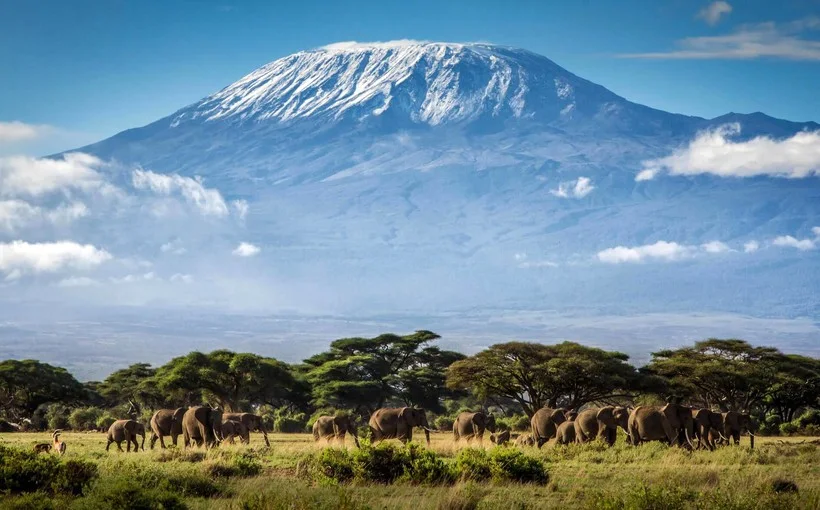Mount Kilimanjaro is the tallest mountain in Africa and is located in Tanzania. It's a dormant stratovolcano that rises to an elevation of 5,895 meters (19,341 feet) above sea level. Kilimanjaro is part of the Kilimanjaro National Park and is a popular destination for trekkers and climbers from around the world.
 |
| Mount Kilimanjaro |
Here are some key points about Mount Kilimanjaro:
1. Location
Mount Kilimanjaro is situated near the border between Tanzania and Kenya, in East Africa.
2. Climbing Routes
There are several routes to the summit of Kilimanjaro, each with varying degrees of difficulty and scenery. Some popular routes include the Marangu Route, Machame Route, Lemosho Route, and Rongai Route.
 |
| Mount Kilimanjaro |
3. Ecological Zones
As you ascend Kilimanjaro, you pass through several distinct ecological zones, each with its own flora and fauna. These zones include the cultivated lower slopes, montane forest, heath and moorland, alpine desert, and the arctic summit.
4. Climate
Due to its height, Kilimanjaro experiences a wide range of climates. The temperatures can vary significantly from the base to the summit, and the weather conditions can change rapidly.
5. Glaciers
Despite its location near the equator, Kilimanjaro has several glaciers and ice fields. However, due to climate change, these glaciers have been receding over the years.
 |
| Mount Kilimanjaro |
6. Cultural Significance
The mountain holds cultural significance for local tribes, such as the Chaga people. It is considered a sacred site by some and has been the subject of various cultural stories and legends.
7. Altitude Sickness
Climbers need to be aware of the risk of altitude sickness as they ascend to higher elevations. Proper acclimatization and slow ascent are crucial to minimize these risks.
8. Conservation
Kilimanjaro National Park is dedicated to preserving the natural and cultural heritage of the mountain. Efforts are made to manage the impact of tourism and ensure the sustainability of the ecosystem.
Climbing Mount Kilimanjaro requires proper planning, physical fitness, and some level of mountaineering experience. It's essential to choose the right route, prepare for varying weather conditions, and consider the advice of experienced guides. Many people are drawn to Kilimanjaro not only for the physical challenge but also for the breathtaking views and unique experience of trekking through different ecological zones on their way to the "Roof of Africa."